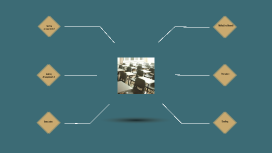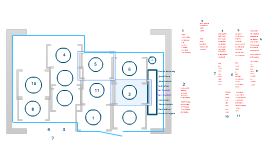Seating Arrangement Plan
Transcript: Location of Name Boxes Position name boxes strategically near each table to allow quick access for guests. This placement encourages interaction, facilitates check-ins, and assists in the overall flow of the event. Text Box Design Visual Layout Design Text boxes should be user-friendly, clearly labeled, and uniformly sized to accommodate guest names. Utilizing a consistent font and size enhances readability, ensuring all names are easily identifiable during seating arrangements. The visual layout will incorporate the 11 tables within a defined rectangular outline, ensuring balance and symmetry. This design allows for easy visibility and accessibility for all participants, enhancing engagement during the event. Guest Name Input Management Guest List Preparation Compile a comprehensive guest list to ensure accurate input of names into the designated text boxes. Organizing the list by table assignment simplifies the process and reduces confusion on the event day. This section focuses on the design and organization of text boxes for seamless guest name input. Effective name placement promotes streamlined event management and enhances the guest experience. Shape and Dimensions Spacing Between Tables Optimal spacing of approximately 5 feet between each table is crucial for facilitating movement and ensuring comfort. This spacing allows guests to navigate easily while encouraging social interaction without feeling crowded. Each round table typically has a diameter of approximately 60 inches, providing ample space for discussions. This circular shape fosters an inclusive environment, encouraging social interaction among attendees. Customization Options Offer customization options for guests to specify their preferences, such as dietary restrictions or special requests. Incorporating this information enhances their experience and ensures personal comfort throughout the event. Number of Tables Table Arrangement For this event, 11 round tables will accommodate up to 10 people each, making it essential to maximize seating while maintaining comfort. The configuration allows for organized flow and interaction among guests. Effective table arrangement is vital for an event hosting 90 attendees at 11 round tables. Optimizing space and layout not only enhances guest experience but also ensures efficient movement and interaction among attendees. Implementation of Seating Arrangement Successfully implementing a seating arrangement requires careful planning and execution. This section covers critical components including the setup timeline, organizer responsibilities, final checks, and methods for gathering feedback and making adjustments after the event. Setup Timeline Create a detailed timeline that outlines all setup activities and deadlines. Tasks should include table arrangement, name placements, and sound/visual checks, ensuring that preparations start well in advance of the event day to allow for any unforeseen delays. Purpose of Arrangement The seating arrangement aims to promote networking and collaboration among guests. By organizing attendees thoughtfully, the event can foster relationships and enhance communication. Responsibilities of Organizers Feedback and Adjustments Assign specific responsibilities to team members, such as overseeing seating arrangements, handling guest inquiries, and coordinating with catering services. Clear roles enhance communication and efficiency on the event day, ensuring a smooth setup. Collect feedback from attendees regarding the seating arrangement and overall event flow. This information is vital for making necessary adjustments in future events, fostering a better experience each time. Seating Capacity per Table Overview of Event Table Configuration Each round table can accommodate up to 10 guests, optimizing the seating arrangement for effective interaction. Ensuring each table maximizes its capacity is essential for inclusivity. The seating will consist of 11 round tables strategically placed in a rectangular layout. This arrangement maximizes space efficiency while encouraging conversations among guests. This section summarizes the key elements of planning a seating arrangement for 90 attendees at an event featuring 11 round tables. Understanding the configuration and capacity is essential for a successful setup. Final Checks Conduct thorough final checks on seating arrangements, ensuring all tables are correctly set and name boxes are appropriately placed. A checklist can assist in verifying that all components meet expectations before the guests arrive. Total Attendees The event will host a total of 90 attendees, necessitating an organized seating plan to ensure all guests are accommodated comfortably. Managing the flow of attendees while maintaining a conducive environment for interaction is crucial. Seating Arrangement Plan Organizing 90 Attendees at 11 Round Tables

















